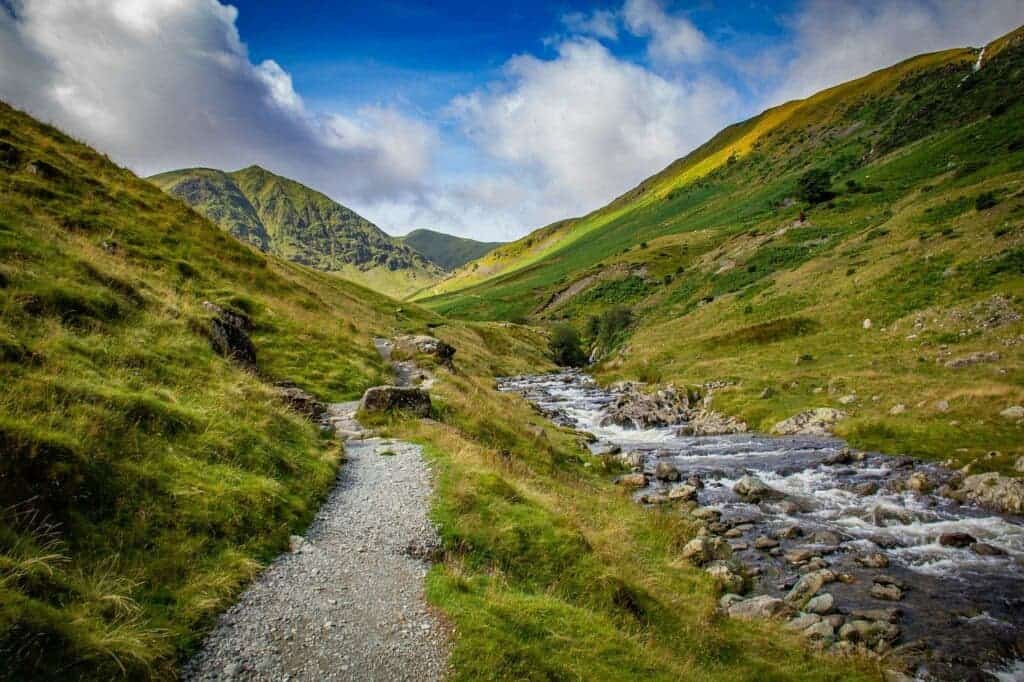Mountain spring water isn’t as clean or fresh as we like to assume, according to new research.

Data collected over four decades shows that the quality of water in high-elevation (mountain) streams has been steadily decreasing over time. The issues underlying this decline are both historical and modern, related to man-made developments in hilly and mountainous landscapes.
The main sources of pollutants in mountain streams are sediment from unpaved, rural roads, and agricultural runoff.
No longer pristine
“We had access to studies from 1976 to last year that encompassed both stream and terrestrial studies,” said Rhett Jackson, a professor at UGA’s Warnell School of Forestry and Natural Resources and the paper’s lead author. “Some streams in Macon County have very high sediment concentrations, four times greater than found in forested streams.”
The findings are based on data from the U.S.’ Southern Appalachian area. Streams here still carry the signs of environmental changes caused by European settlers moving into the region during the 1900s, the authors report.
Native Americans, the original inhabitants of the Southern Appalachians, traditionally only farmed the valleys strewn along this mountain chain. They left the hills and mountain slopes undeveloped as woodlands, where they would hunt and gather wild fruits and plants.
When settlers moved in, however, they engaged in heavy logging, to obtain timber for trade and construction, and to clear space for farmland. This process significantly changed the landscape of the area’s hills and mountain slopes. New farmland established on the hills promoted erosion, and the sediment produced by that erosion was gradually cleaned away by rainfall into high-altitude streams.
Even today, the authors explain, streambeds in the Southern Appalachians carry those century-old bodies of sediment, under layers of fresh material that is still making its way into their courses.
High levels of sediment affect the wild animals living in the streams, Jackson explains. For starters, it makes it harder for animals to find food as it makes the waters murky. It also has a direct impact on fish growth and their ability to resist disease.
Sediment builds up downstream as well, making its way into public water supplies. As such, there’s a direct financial cost to communities, as these impurities need to be filtered out before water can be pumped to taps around towns and cities.
The team underscores that these changes in sediment input into high-altitude streams first started manifesting over one century ago, and are the result of environmental changes caused by increased habitation due to settlers moving into the area.
“The landscape you see now isn’t what it was like in 1900—the early settlers logged everything,” said Jackson.
Although the first settlers started this process, their descendants today are carrying the torch. Starting with the 1980s, for example, the area saw a massive rise in interest for the development of the steep (and previously wild) mountain slopes. A large number of vacation residences and villas were built on these slopes, generating significant land disturbance through the buildings themselves and associated infrastructure — the carving out of roads. Such development made the area rife for landslides, and the unpaved roads that reached these buildings produced ample dust.
“Roadside ditches and unpaved roads produce a lot of sediment, [which] increases as roads get steeper and as gravel roads get more use,” said Jackson.
The authors report that while a typical stream in the southern Appalachian forest contains around 8 to 10 milligrams of sediment per liter, in areas with both mountain and hill development, they have found concentrations of sediment between four to six times this value.
Farming also plays a part. Runoff from farms introduces a high level of nitrates into mountain streams. Levels of these compounds are particularly high for streams running past pastures that do not enjoy a buffer of trees to absorb some of the fertilizer. Deforestation further impacts the health of wild communities in these streams as the lack of shade leads to higher average water temperatures, which can be damaging for trout and other local species that are adapted to cold waters. Around 40% of the streams in the study area have lost their buffer of trees, the team reports.
“On small streams, the actions of individual landowners matter a lot,” he said. “Sometimes, we see unusual streamside activities [such as illicit discharge pipes or streams diverted through animal enclosures] with substantial water quality effects.”
“Because the water in streams comes from the whole landscape, everything we see on the land has some effect on streams. But streams are resilient, and as long as we intelligently modify our actions a little bit, we can farm and live near streams while protecting their water quality. Maintaining the quality of our landscape requires a little thought and work on our parts.”
Taking small, simple steps, such as planting rows of trees near an open stream, or making sure to buffer runoff from a gravel road, can help a great deal in improving the water quality of open streams, the team concludes.
The paper “Distinctive Connectivities of Near-Stream and Watershed-Wide Land Uses Differentially Degrade Rural Aquatic Ecosystems” has been published in the journal BioScience.



